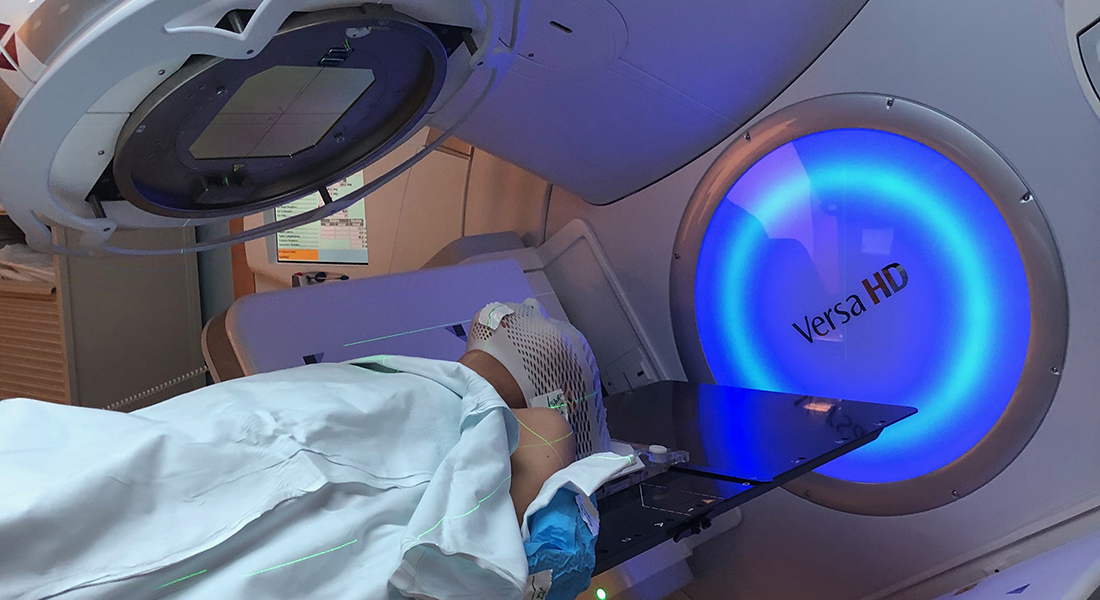Breast cancer treatments can improve both survival chances and income
Radiation therapy treatment for breast cancer not only improves survival rates but also generates long-term financial benefits according to a new study from the University of Copenhagen.

Survivors of illness and disease often suffer economic hardship such as reduced employment as they recover from treatment. Increasingly, the health community and policy makers are investigating whether treatments can have non-medical benefits that reduce these economic costs.
In a new study, a group of economists investigated how radiation therapy, a treatment that uses high energy rays to kill cancer cells, affects Danish breast cancer patients' risk of dying and their labor market performance.
Breast cancer provides an excellent opportunity to consider the non-medical benefits of treatment.
‘It is the most common cancer worldwide. In 2020 alone, more than 2.2 million new cases were detected,’ says N. Meltem Daysal, Associate Professor at the Department of Economics and the Center for Economic Behavior and Inequality at the University of Copenhagen.
‘Furthermore, about a third of breast cancer patients are diagnosed between the ages of 25-54, which are the prime working ages. Finally, survival rates are high - more than 90% of patients in high-income countries are still alive five years after diagnosis,’ she says.
Radiation therapy extends working life
For the study, N. Meltem Daysal and her fellow researchers used registry data on nearly 40,000 Danish women diagnosed with breast cancer between 1990 and 1998. The study took advantage of a change in Danish medical guidelines in 1995 that expanded eligibility for radiation therapy without affecting other treatment allocations.
This change enables researchers to assess the effects of radiation therapy without confounding from other treatments.
The researchers found that radiation therapy reduced the risk of dying within 10 years of diagnosis by approximately 35%.
In addition to improving survival rates, radiation therapy was found to have a number of positive effects on patients' working lives.
‘Women who received radiation therapy were 37% more likely to be working 10 years after diagnosis compared to women who did not receive radiation therapy. And women who received radiation therapy had on average 45% higher income 10 years after diagnosis compared to women who did not receive radiation therapy,’ explains N. Meltem Daysal.
Economic benefits must be factored into the equation
The researchers emphasize the broader implications of these findings for health policy and economic planning.
‘While the primary goal of cancer treatment is to save lives, our research underscores that medical interventions like radiation therapy can also generate substantial economic benefits - even in a country like Denmark, which has universal access to healthcare and a strong social safety net,’ says N. Meltem Daysal and elaborates:
‘With cancer treatment costs rising globally, these findings reinforce the need for policymakers to consider the economic advantages of medical interventions. Our study provides compelling evidence that investments in effective cancer treatments can yield significant long-term societal benefits,’ concludes N. Meltem Daysal.
The study, entitled ‘Do Medical Treatments Work for Work? Evidence from Breast Cancer Patients', is co-authored with William N. Evans (University of Notre Dame), Mikkel Hasse Pedersen (EY-Denmark), and Mircea Trandafir (The Rockwool Foundation). It is published in the American Economic Journal: Economic Policy.
Contact
N. Meltem Daysal, Associate Professor
Department of Economics
Email: meltem.daysal@econ.ku.dk
T: 35 32 83 47
Simon Knokgaard Halskov, KU Press Office
Email: skha@adm.ku.dk
M: 93 56 53 29
